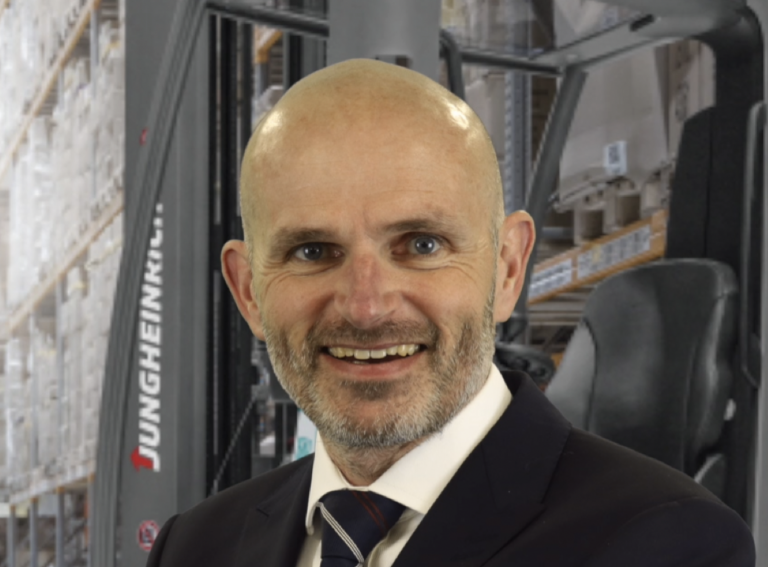Jon Divers, customer service director at Jungheinrich, explores a number of considerations that businesses should take into account to identify which lithium-ion setup is the most appropriate for each business in order to unlock the highest reward from the technology.
Lithium-ion – how to deploy a bespoke battery strategy
The speed with which organisations are embracing Lithium-ion technology is gaining pace. Spurred on by environmental concerns, cost assessment and efficiency drives, the move away from LPG and Diesel is growing at an accelerating rate. Even in a fast changing market, many businesses are becoming increasingly knowledgeable about lithium-ion, especially in terms of its varied benefits.
But while organisations may be aware of the appeal of Lithium-ion in terms of its ability to support 24×7 logistics operations with fast charging and no battery changes, they may not be aware it’s not a one-size-fits-all approach. In fact, there are a number of considerations that should be taken into account to identify which lithium-ion setup is the most appropriate for each business in order to unlock the highest reward from the technology. The wrong battery / charger combination will not recognise the advantages of a correct match to the application of individual customers.
Not all battery environments are the same
A warehouse or logistics environment is unique compared to other battery powered vehicle environments. For electric cars, for example, the technology is all about the distance achieved between charges and the weight of the battery pack. Achieving the best balance here achieves the greatest gains for the driver. Electric automotive manufactures are constantly striving for higher density and lower weight batteries with the best range and shortest charge times.
However, the same constraints are not present in a warehouse for Materials Handling Equipment as the charger is almost always available close by and charging can be done regularly whilst the truck is stationary for a short period of time. And weight is a friend rather than a foe when it comes to a forklift or counterbalance truck for example, so different battery chemistries can be considered, such as the use of Iron Phosphate. Different manufacturers will use different chemistries, but Iron Phosphate is currently the safest cell chemistry and from an ecological point of view, it’s also non-toxic and harmless.
It’s not as simple as finding the biggest battery you can! And it’s more than just fast charging. It’s about a bespoke solution for each business, depending on its needs and setup.
Water, tap and bath
A simple way of explaining this is through a ‘water, tap and bath’ analogy – how long does it take for a tap to fill up the bath? It depends on how big the tap is, how fast the flow of water and how big the bath is. An efficient setup for one environment could be to have the biggest tap with the smallest bath; i.e. the biggest charger with the smallest battery. With a smaller tap (or smaller charger) and a big bath (big battery), it is going to take longer to fill, however this could be the optimum solution to work within the power requirements (or water pressure). Every application is and should be different for each business to gain the most value.
To deploy the most appropriate Lithium-ion strategy, the most important questions are; how long will the truck be working? And when are the breaks in any given shift? This determines how often the forklift will be put back on charge, which in turn dictates what size of charger and battery is best suited. This is then matched against the available power into the building.
Data analysis
But some businesses might think that they don’t have enough breaks, that their trucks are working non-stop. This is where a data recording device comes in to play. Trucks will either be working (the wheels are turning or the mast is moving – the truck is in use), standing (the truck is not moving, albeit turned on or off), or charging. The data recording device can capture that data every 20 seconds over five days, providing over 22,000 readings to identify where the potential breaks are and the typical energy consumed during a given period of time.
For example, a shift change might actually take 20 minutes from start to finish. But in that time, you can already have put nearly 50% energy back into the battery. Capitalising on breaks such as these can go a long way to supporting the increasingly common 24×7 operations of an organisation.
Conclusion
Each different battery chemistry setup offers different characteristics to serve a variety of charging strategies – but it is key for each organisation to capitalise on the bespoke nature of Lithium-ion in order to realise the most efficiencies out of the technology. By working with a consultant that is an expert in the field, the right Lithium-ion strategy can be identified and implemented rapidly. That way, not only will each business achieve the highest reward, but they will be safe in the knowledge that it will also be in the most efficient way possible – not just a one size fits all solution.





